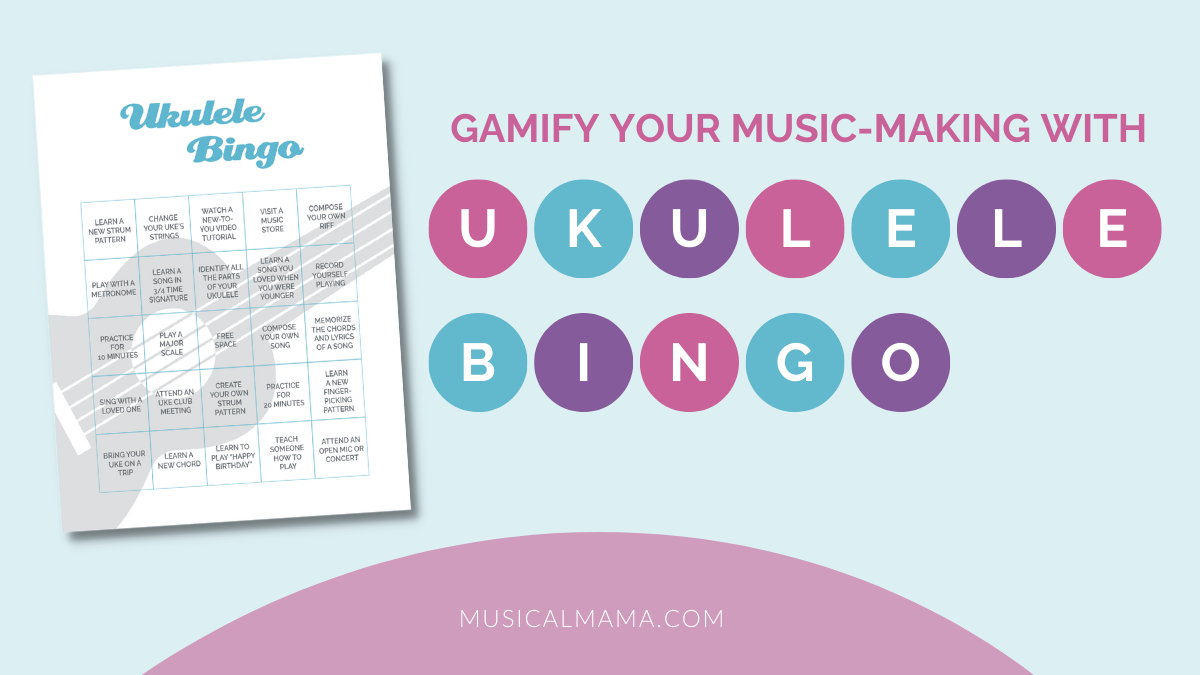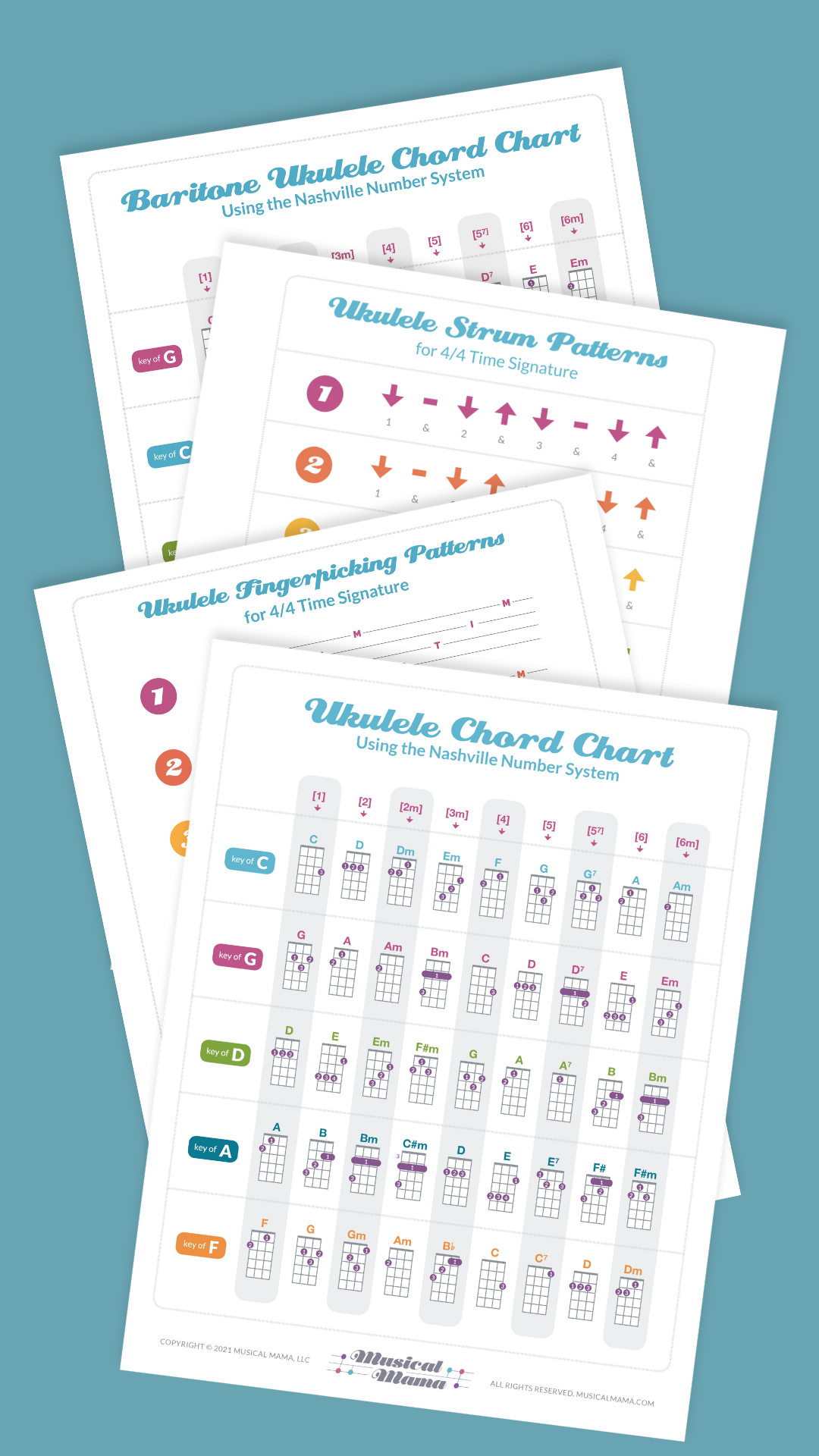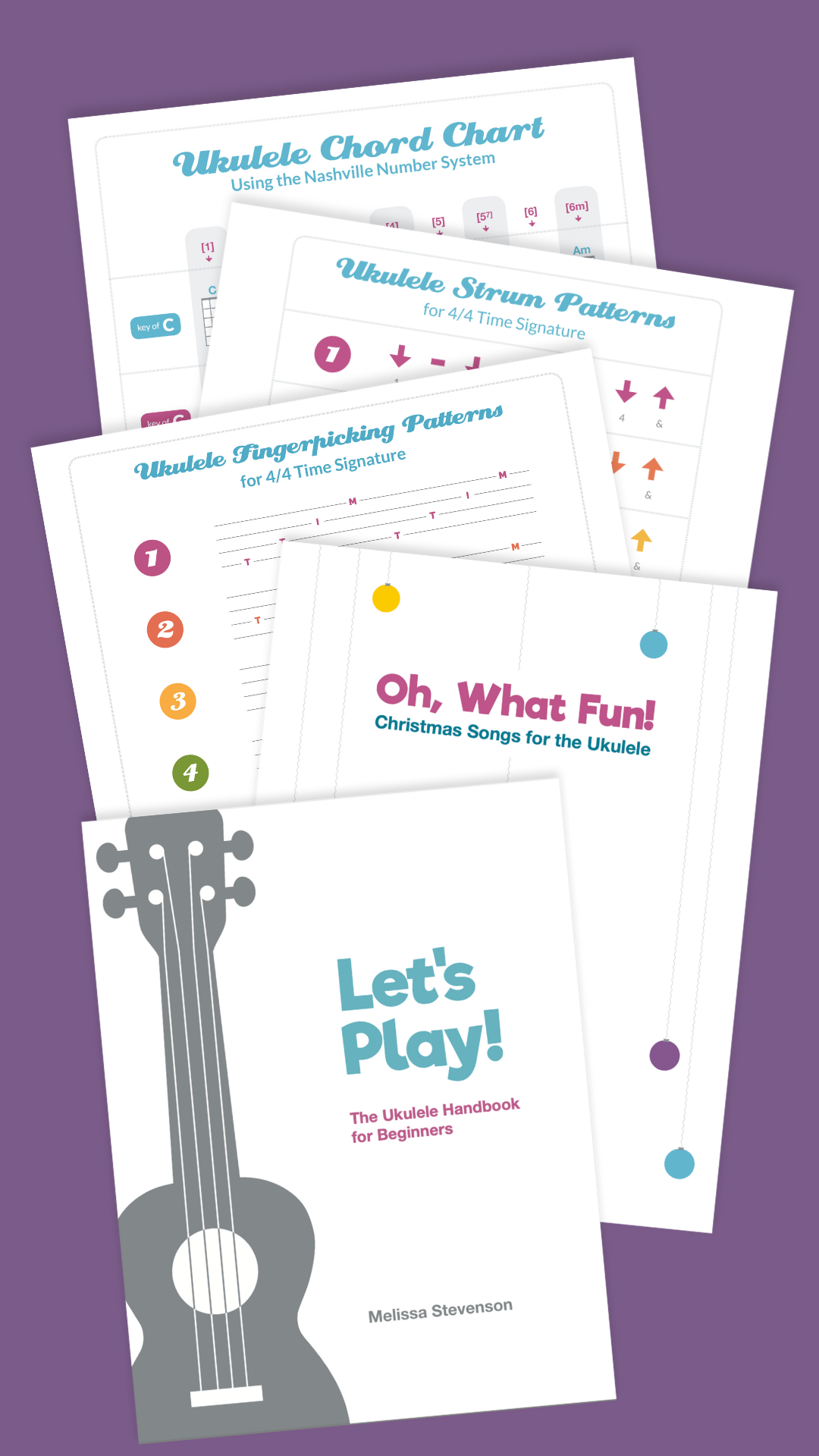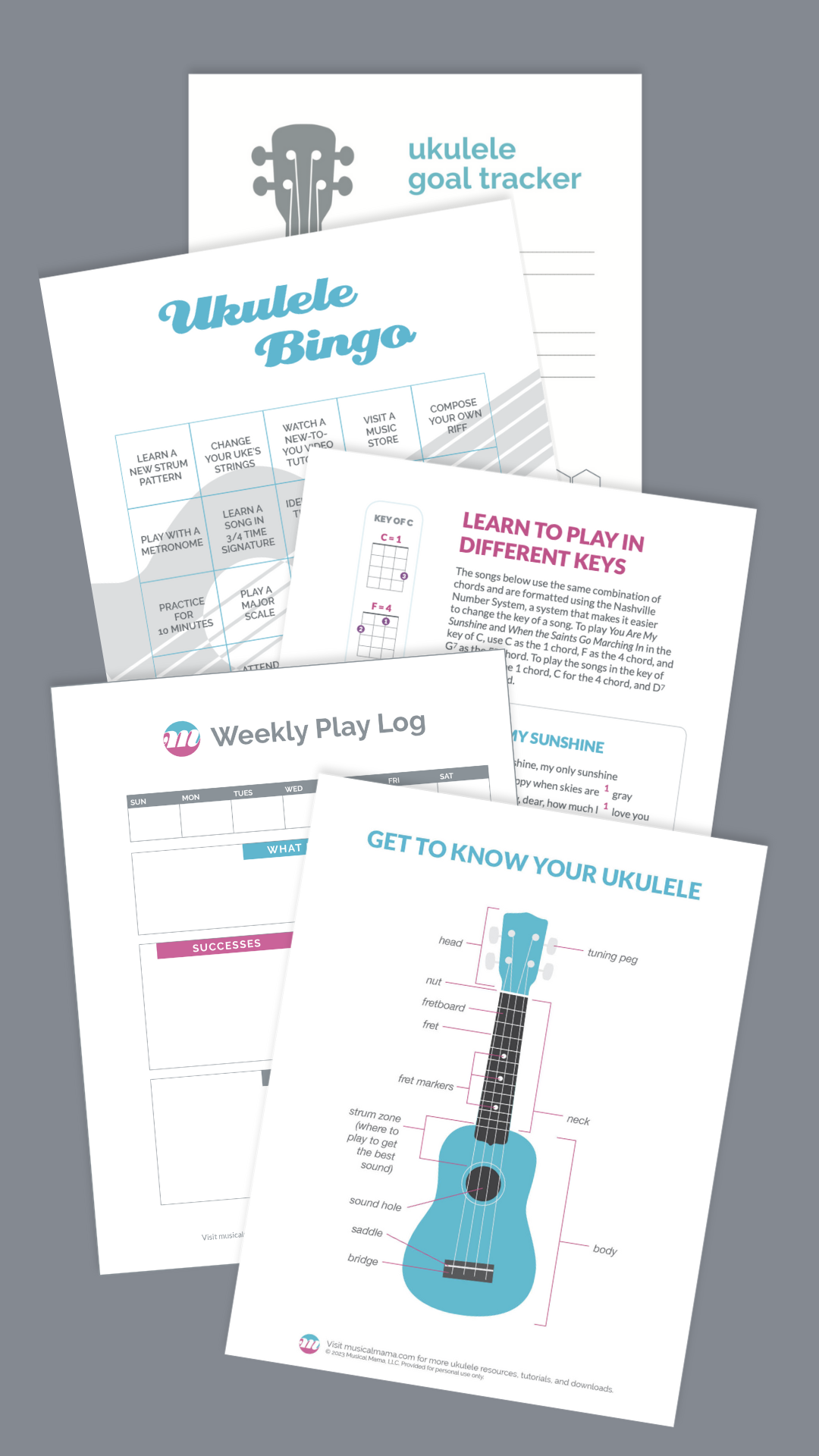Often times, we ukulele players start our musical journey by learning how to play a few songs with a basic down-up strum. Then we might learn a more complicated strum pattern only to find we’re having little trouble matching the strum to a song. Often times this is because a song has pickup notes. And the good news is that this is something you can make sense of even if you’ve never had a formal music lesson or learned any music theory before. First, let’s define what pickup notes are:
Pickup Notes
Lyrics (or notes) that come before the first full measure of music. The formal term for this is anacrusis. To really know what to do with a pickup note, you have to know what a measure is:
Measure
A grouping of beats. Often times this means you’re counting 1-2-3-4, 1-2-3-4 or 1-2-3, 1-2-3 . Learn more about measures and time signatures here and here.
In order to get your strum to sound right, you have to start it on the right count. This isn’t too big of a deal if we’re just strumming down-up-down-up over and over, but once you start moving on to more advanced strums it’s something you have to track more closely. The first step is to figure out where the first full measure begins. Are there any pickup notes? If so, you have to account for them when you are strumming.
Easy Songs to Practice “Hearing” Pickup Notes
Now that you know what a pickup note is, try playing some songs that have them! Many of the songs in Let’s Play! The Ukulele Handbook for Beginners have pickup notes, but I’ll just link to a couple of them here. Sing and strum along and see if you can start to “feel” where the first full measure begins:
There Ain’t No Bugs On Me is an easy, two-chord song with lots of spacing between the chord changes, so it’s a great song for practicing new-to-you strums!
Next, check out Oh, My Darling Clementine. It’s in 3/4 time, meaning we’re counting in sets of three (1-2-3, 1-2-3) and in the video I talk about where the pick-up notes fall in that count. I also use a clapping pattern to help you get comfortable with the time signature.
I do my best to incorporate music theory in a way that’s accessible, relevant, and straightforward, so that you quickly grasp concepts and can apply them to your playing. If you’d like to learn how to make music AND make sense of it, check out Let’s Play!






